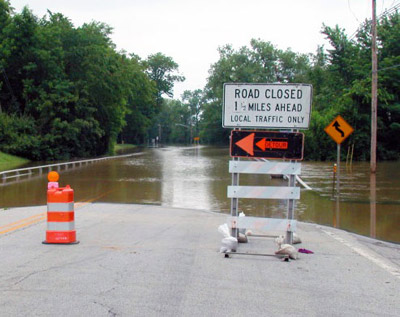Adler Planetarium

Back to Adler Planetarium
Back to Adler Planetarium
Downpours and droughts...
For Chicago, the future looks a lot wetter and hotter than anything the city has seen in the past. Scientists predict wetter winters and more extreme weather events like blizzards, heavy rainstorms, and droughts. So the Windy City is getting ready.
Wetter snow and heavier rainfall can overwhelm sewers and flood a city mostly made of concrete surfaces that can't absorb water. Even now, sewers frequently overflow during heavy storms and rainwater rushes into local rivers, as well as backyards and basements. Flooding costs the city and its residents millions of dollars a year. And these costs will rise as the frequency and intensity of rainstorms does too. In preparation, the city is repaving alleys with permeable surfaces, installing rooftop gardens on public buildings, and planting more trees and other vegetation across the city to soak up rainfall.
Giving Chicago's landscape a makeover will also help during future droughts. As you might guess, long dry periods can put a serious strain on water supplies. But dry weather also impacts water quality. Water levels in rivers and lakes may drop during droughts, but the amount of pollution dumped into waterways probably won't. If there isn't enough water to dilute contaminants, lakes and rivers can become toxic, forcing sanitary districts to use more chemicals and spend more money for the same quality drinking water. Covering the city with plants and trees that filter out pollutants could help keep water quality in check even when the supply is low.
Wetter snow and heavier rainfall can overwhelm sewers and flood a city mostly made of concrete surfaces that can't absorb water. Even now, sewers frequently overflow during heavy storms and rainwater rushes into local rivers, as well as backyards and basements. Flooding costs the city and its residents millions of dollars a year. And these costs will rise as the frequency and intensity of rainstorms does too. In preparation, the city is repaving alleys with permeable surfaces, installing rooftop gardens on public buildings, and planting more trees and other vegetation across the city to soak up rainfall.
Giving Chicago's landscape a makeover will also help during future droughts. As you might guess, long dry periods can put a serious strain on water supplies. But dry weather also impacts water quality. Water levels in rivers and lakes may drop during droughts, but the amount of pollution dumped into waterways probably won't. If there isn't enough water to dilute contaminants, lakes and rivers can become toxic, forcing sanitary districts to use more chemicals and spend more money for the same quality drinking water. Covering the city with plants and trees that filter out pollutants could help keep water quality in check even when the supply is low.
